NRAO eNews
Volume 8, Issue 10
16 November 2015
NRAO eNews
Volume 8, Issue 10 • 16 November 2015

Upcoming Events

Science at Low Frequencies II Workshop
Dec 2 - 4, 2015 | Albuquerque, NM

Second ngVLA Technical Workshop
Dec 08 - 09, 2015 | Socorro, NM

U.S. Radio – Millimeter – Submillimeter Science Futures Conference
Dec 15 - 17, 2015 | Chicago, IL

Next Generation Very Large Array Workshop
Jan 4, 2016 | Kissimmee, FL

NRAO Town Hall at Jan 2016 AAS Meeting
Jan 7, 2016 | Kissimmee, FL

ALMA Data Reduction Party
Jan 27 - 29, 2016 | Charlottesville, VA

AAAS 2016: Planet Formation With Radio Eyes
Feb 13, 2016 | Washington, DC

5th VLA Data Reduction Workshop
Mar 14 - 18, 2016 | Socorro, NM

Molecular Gas in Galactic Environments
Apr 4 - 7, 2016 | Charlottesville, VA
35 Years of Constraints on Thermonuclear Supernova Progenitors with the VLA
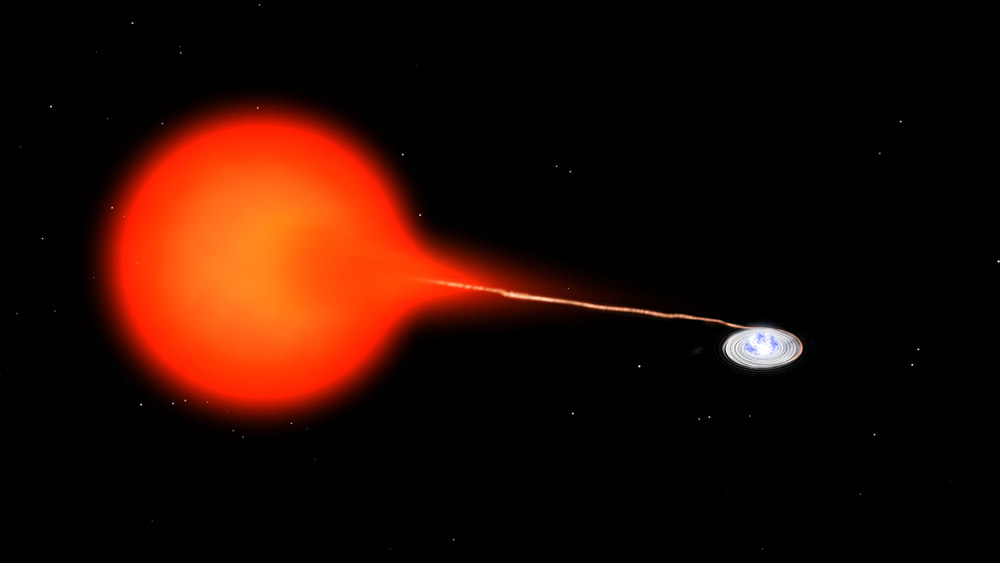
[click to enlarge]
Today, the progenitors of Type Ia Supernovae (SNe) and their lower-luminosity thermonuclear cousins remain shrouded in mystery. While researchers agree that these SNe mark the explosions of white dwarf stars, it is unclear what destabilizes the white dwarf: merger with another white dwarf, accretion from a H-rich main sequence or giant star, or perhaps interaction with a helium star? Deep radio observations with the VLA can tackle this puzzle by searching for material in the environments of SNe, left over from the process of mass transfer onto the white dwarf.
When a SN shock interacts with surrounding material, relativistic electrons are accelerated and magnetic fields are amplified, yielding synchrotron emission. Therefore, radio observations of SNe provide insight into pre-SN mass loss and SN progenitors. In a paper recently submitted to Astrophysical Journal, our team combined archival radio observations from 30 years of legacy VLA operations with new observations from the Karl G. Jansky VLA. This yields a sample of 85 thermonuclear SNe observed by the VLA in the first year following explosion. None are detected. These radio limits imply that Type Ia supernovae explode in low-density environments.
We use our limits on the density of material surrounding these SNe to constrain the fraction of thermonuclear SNe that might have red giant companions. We make use of legacy VLA observations of Galactic symbiotic binaries carried out by E. Seaquist and collaborators to characterize the density of material around white dwarfs with red giant companions, and find that, for many SNe, we can rule out such symbiotic progenitors. We conclude that ≲10% of thermonuclear SNe have red giant companions.
Future work with the VLA can improve upon these results via: (a) further observations of Galactic symbiotic binaries that more completely pin down their wind properties; (b) additional observations of a large number of Type Ia SNe, providing even stronger constraints on the fraction with red giant companion; and (c) analysis of radio observations at longer times after explosion (1-100 years, as the SN transitions to a SN remnant) to probe the SN environment at larger radii.
ALMA Program News
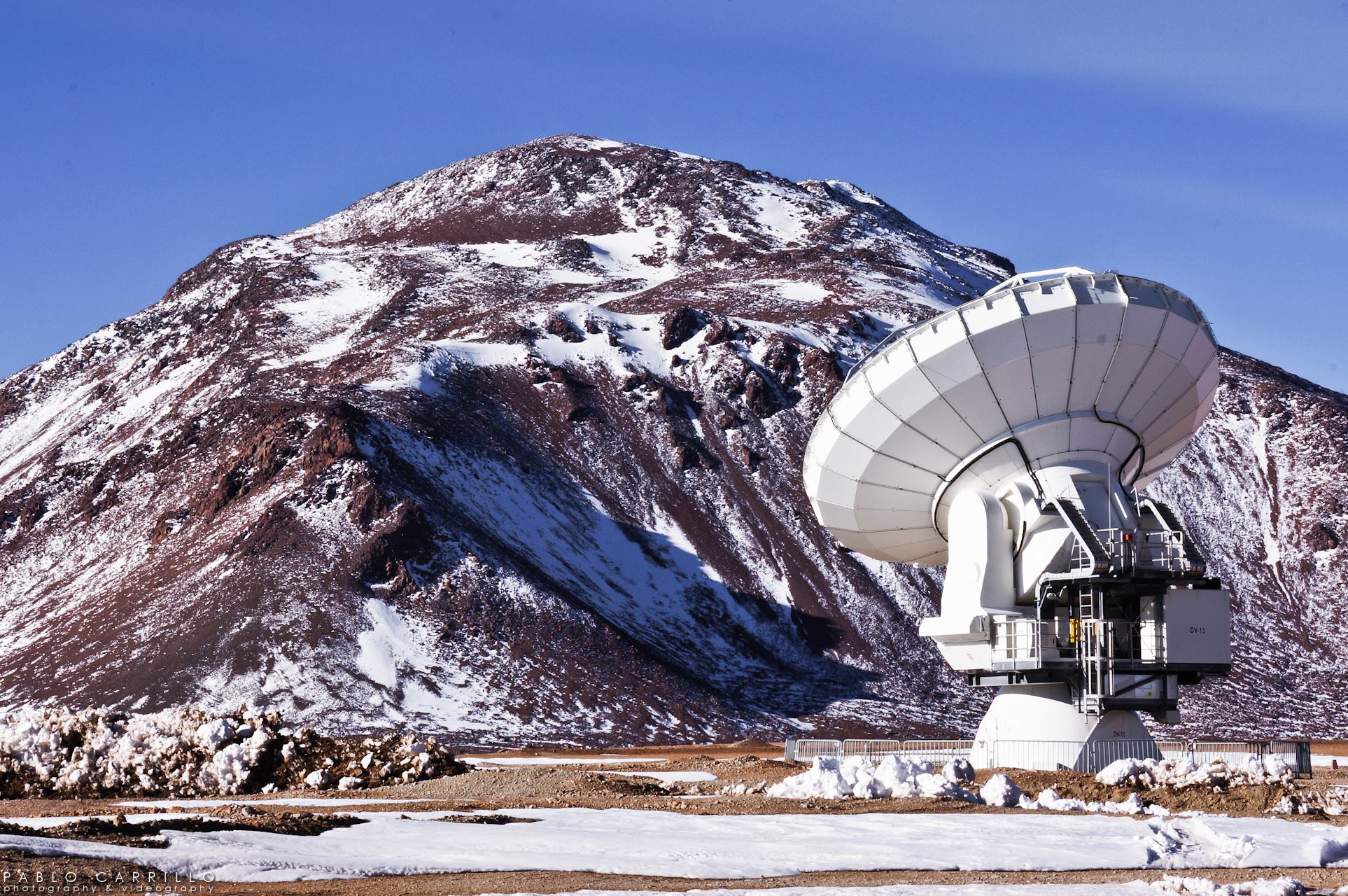
P. Carillo.
An ALMA antenna at the end of a long-baseline.
[click to enlarge]
ALMA began Cycle 3 observations as scheduled on 15 October with the array in its long baseline, C36-8 configuration. Baselines in this configuration span 267 m to 12.645 km, providing a beam size of ~0.06 arcsec at 100 GHz, with a maximum recoverable scale at that frequency of 1.4 arcsec. Several antennas remain on 15 km baselines for testing purposes. Although weather has been suboptimal, perhaps owing to El Nino conditions in the Pacific, several schedule blocks using this new and non-standard capability are now in the process of analysis, calibration, and imaging for delivery to ALMA Principal Investigators.
The ALMA Status Page has several new features: the Chajnantor precipitable water vapor and phase stability, the array configuration, and project observation status may all be monitored there. ALMA continues to accept requests for projects with urgent observing needs through its program of Director’s Discretionary Time (DDT). DDT proposals should conform to the capabilities available for the Cycle 3 Call.
The Proceedings of the December 2014 international ALMA conference held in Tokyo, Japan –Revolution in Astronomy with ALMA: The Third Year – are being printed and distributed. Congratulations are due to the conference hosts at the National Astronomical Observatory of Japan for creating an informative and full-color record of the conference presentations.
The next North American ALMA Science Center Workshop – Molecular Gas beyond the Milky Way: Astronomy and Astrochemistry in Extragalactic Environments – will be held in Charlottesville, Virginia at the Omni Hotel 4-7 April 2016. Please visit the Workshop website for additional information and to pre-register. Additional information regarding this NAASC Workshop will be published soon in eNews and at the NRAO science website.
Robert L. Brown Outstanding Doctoral Dissertation Award
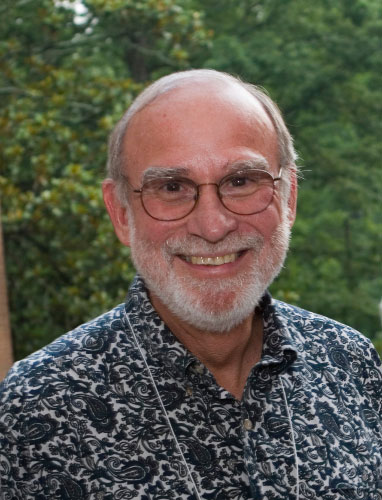
Applications for the 2015 Robert L. Brown Outstanding Doctoral Dissertation Award should be submitted to RLBrownAward@nrao.edu by 31 January 2016. This recognition of outstanding achievement by a 2015 Ph.D. recipient was established by NRAO and Associated Universities, Inc. on behalf of Bob Brown’s friends and family to honor Bob’s life and career.
For further information, please visit the Robert L. Brown Award website. Questions may be addressed to RLBrownAward@nrao.edu.
NRAO Summer Student Presentation at NSF
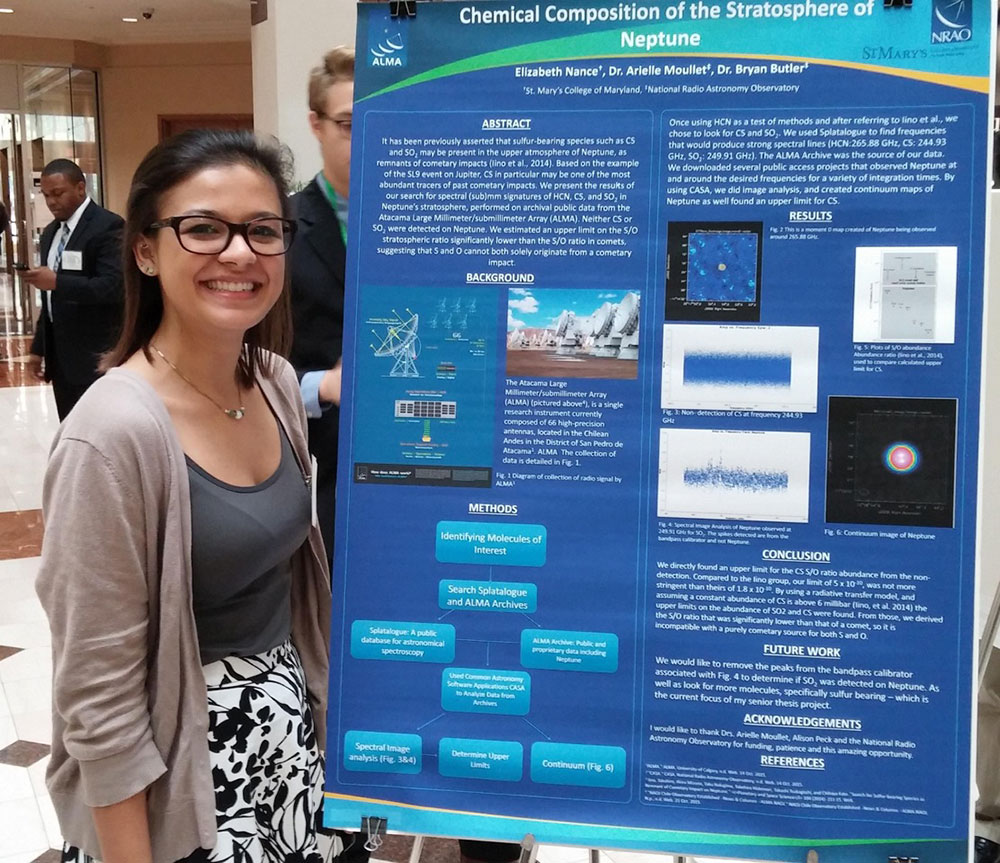
Elizabeth Nance (St Mary's College of Maryland) at the October REU Symposium at NSF Headquarters.
[click to enlarge]
NRAO Research Experiences for Undergraduates (REU) student Elizabeth Nance (St Mary’s College of Maryland) was one of four astronomy students invited to present her research at the REU Symposium in Arlington, VA in October. This symposium was organized by the Council on Undergraduate Research (CUR) and gave Elizabeth the opportunity to display an outstanding poster on her research in the atrium of the National Science Foundation (NSF) headquarters, with students from a variety of STEM fields and a number of NSF Program Officers and REU Coordinators in attendance. Elizabeth’s research on The Composition of the Upper Atmosphere of Neptune was carried out in Charlottesville this past summer under the guidance of NRAO scientific staff member, Arielle Moullet. NRAO Student Programs Coordinator Alison Peck accompanied Elizabeth to Arlington and participated in a number of workshops for REU program organizers on recruiting, broadening participation, and professional development curricula for summer student programs.
NRAO Acknowledgement in Scientific Publications

NRAO is audited annually by the National Science Foundation (NSF) regarding the inclusion of the official, one-sentence Observatory acknowledgement in scientific papers that use NRAO telescopes, instrumentation, and data, or include an NRAO author:
The National Radio Astronomy Observatory is a facility of the National Science Foundation operated under cooperative agreement by Associated Universities, Inc.
Several recent scientific papers that describe research based on NRAO telescope time and data, and/or including an NRAO author have neglected to included this acknowledgement. Given the volume of the current astronomical liteatures, such papers can be easily missed and, thus, be left out of the official NRAO publications database and performance metrics.
Please be careful to include this brief acknowledgement, whenever appropriate, in your scientific publications. Additional information regarding the NRAO acknowledgement – and page charges – is available at the NRAO Library website or by contacting NRAO Librarian Marsha Bishop (+1.434.296.0254).
GBT & Cellphone RFI Mitigation
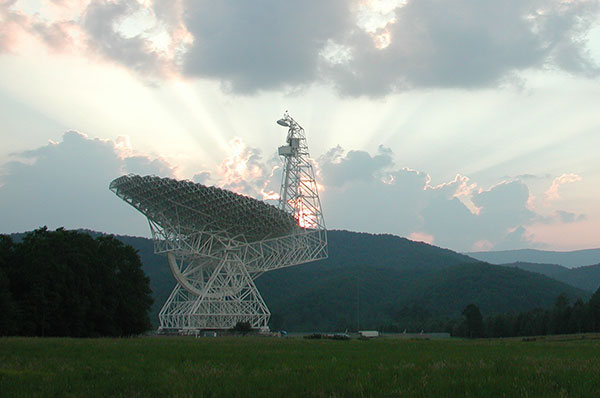
[click to enlarge]
Due to recent changes in the way the U.S. Federal Communications Commission will handle licensing of cell phone transmitters, a more diligent approach to monitoring and mitigating any cellphone Radio Frequency Interference (RFI) must be undertaken by Green Bank Telescope observers and the Green Bank Interference Group.
We request that observers report any RFI they encounter in the frequency ranges listed below to interference@nrao.edu, including information such as time, duration, intensity, topocentric frequency, azimuth and elevation. Without your help and prompt RFI reporting, we will not be able to mitigate these potential RFI sources in a timely fashion.
Current frequencies of interest
| 698-763 MHz | 775-793 MHz | 805-809 MHz | 811-821 MHz |
| 851-854 MHz | 856-866 MHz | 869-894 MHz | 896-901 MHz |
| 935-940 MHz | 1695-1780 MHz | 1850-1920 MHz | 1930-2000 MHz |
| 2110-2180 MHz | 2305-2320 MHz | 2345-2360 MHz |
In addition to the frequencies listed above, we appreciate your reporting any RFI detected in any observation conducted at NRAO – Green Bank.
Celebrating the 140-Foot Telescope
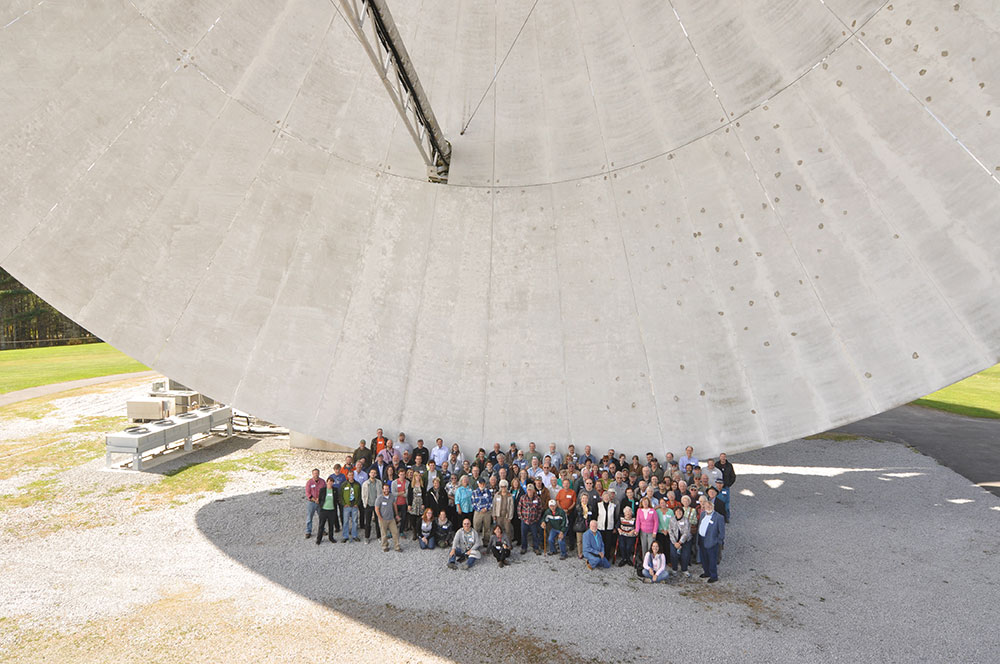
Group photo of 50th celebration attendees, 13 Oct 2015
[click to enlarge]
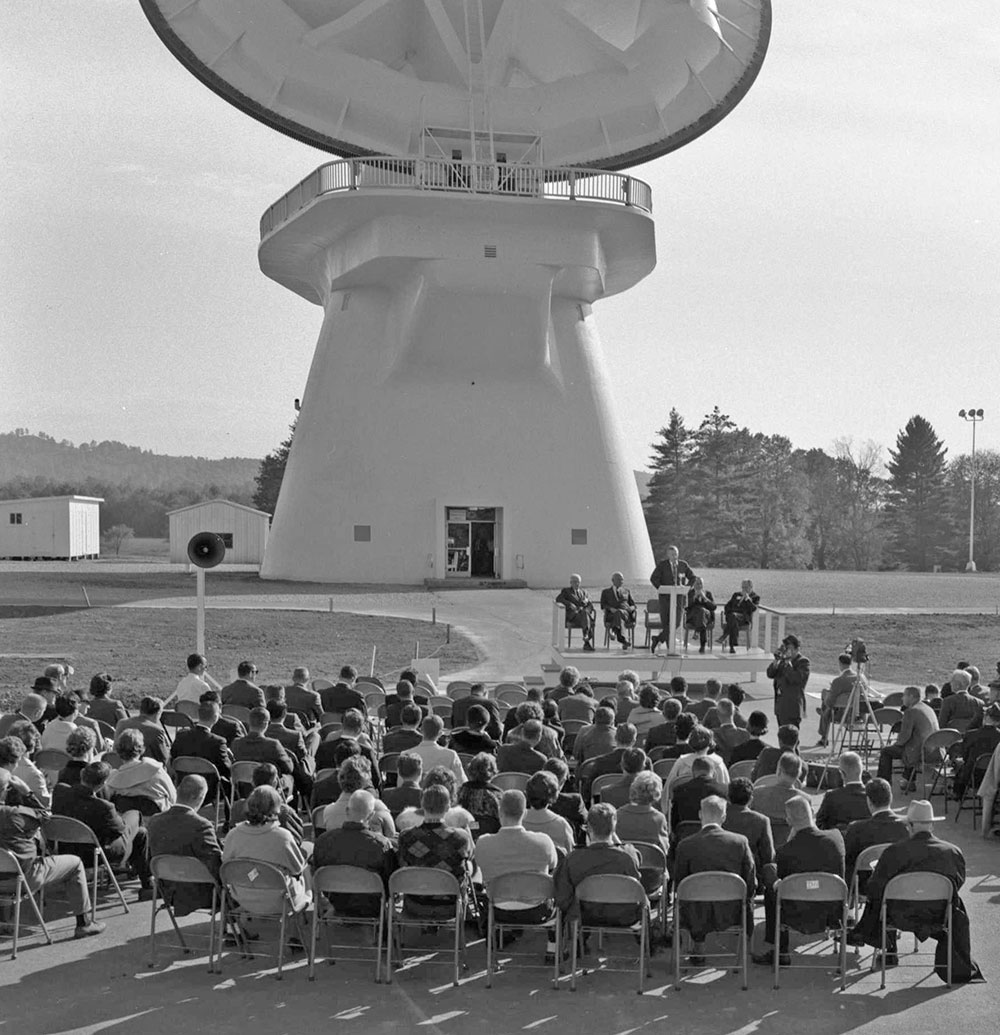
Director David Heeschen speaking at dedication, 13 Oct 1965
[click to enlarge]
On 13 October 2015, fifty years to the day after the dedication of the 140-foot Telescope on 13 October 1965, 70 retirees and friends and 80 current employees gathered in Green Bank to celebrate the 50th anniversary of that dedication. The day began with brief talks: the first by Frank Ghigo on the construction of the telescope and attendant problems, and the second by Dave Hogg on the ways in which the exciting observations in the first few years changed our view of the Universe.
Attendees were transported to the telescope for lunch, a proclamation from the Governor of West Virginia honoring the telescope, tours of the telescope, and a wonderful exhibit in the rooms at the entrance level of photos and objects illustrating the telescope's construction and use. Items were gathered for a 140-Foot Telescope time capsule that will soon be buried. The afternoon's festivities included opening the time capsule buried at the 300-Foot Telescope during its 25th birthday symposium in 1987, with Bob Vance, Rich Lacasse, and Bob Simon pulling out wondrous treasures (see From the Archives below). The afternoon ended back at the Jansky Lab, where attendees enjoyed showings of the two Peter B. Good films from the mid-1960s – The Lift and Construction of the 140-Foot Telescope – and several recently digitized 2-3 minute films from 1958-1959, including the 14 August 1958 ground-breaking, the concrete pour for the pedestal, and the original shaft moving up the road from the Bartow rail siding in September 1959.
Everyone enjoyed a festive day of seeing old friends and celebrating this remarkable instrument.
2014 NRAO Annual Report
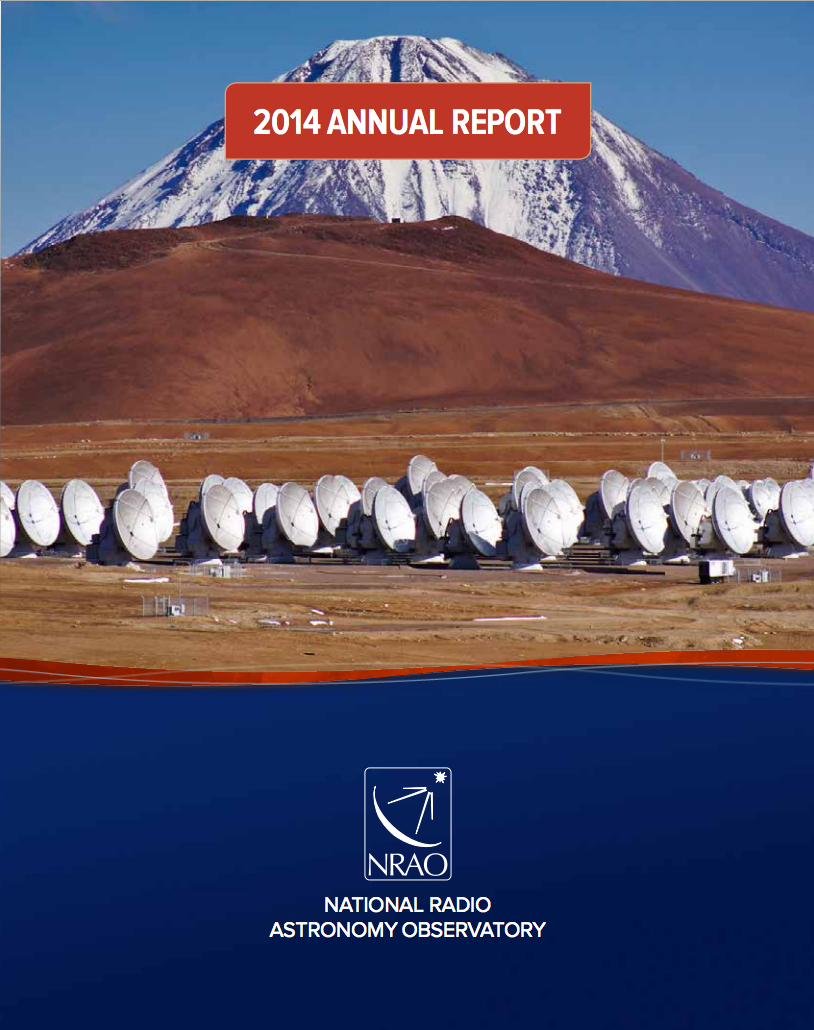
The NRAO Annual Report for calendar year 2014 describes the year’s science highlights and summarizes the numerous science, development, operations, and construction activities that were conducted across the Observatory from 1 January – 31 December 2014. The 2014 NRAO Annual Report can be accessed as a pdf download or for interactive on-line viewing.
Recent Media Releases
|
Image Release: Protostar Growth Spurts |
|
|
Radar Images Provide Details on Halloween Asteroid |
|
|
NRAO Attends White House Astronomy Night |
|
|
NRAO's Iconic 140-Foot Radio Telescope Celebrates 50 Years of Discovery |
|
|
VLA Reveals Spectacular "Halos" of Spiral Galaxies |
|
|
NSF Grant to NRAO and WVU |
From the Archives
Ellen Bouton
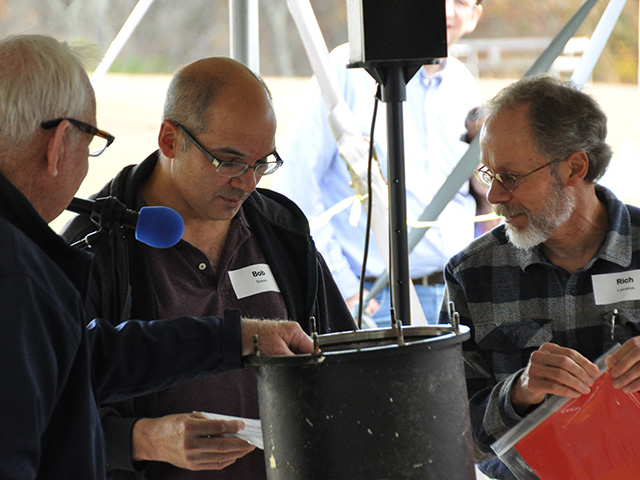
[click to enlarge]
About this month's photograph: The 13 October 2015 celebration of the 50th anniversary of the dedication of the 140-Foot Telescope (see article above) included the opening of a 300-Foot Telescope time capsule, buried during the telescope’s 25th birthday symposium in 1987. In this photo Bob Vance, Bob Simon, and Rich Lacasse peer into the time capsule at treasures yet to emerge.
For additional photos of the retrieval and opening of the capsule, see the slideshow below. The capsule was a receiver test dewar. After all items were placed inside, the air was vacuumed out and nitrogen gas pumped in, creating dry and inert conditions that allowed the contents to remain pristine during their 28 year burial. Among the many treasures retrieved from the time capsule were a 1987 coin set, photos of the 300-Foot Telescope interior and equipment, a 4.8 GHz cooled GaAs FET amplifier (with a note saying it did not work but perhaps someone else could make it work!), a July 1987 issue of PC Magazine, an URSI meeting paper on the development of the spectral processor for the 300-Foot, an AM29516 16x16 multiplier, the first 300-Foot control program (on punched cards), and a 17 September 1987 Pocahontas Times containing an article on the 300-Foot Telescope birthday party. There were also some photos and other items related to the 140-Foot Telescope that will probably go into its time capsule, which is being prepared.
Thanks to Mike Holstine, Gene Runion, and the NRAO Education & Public Outreach team for photos.
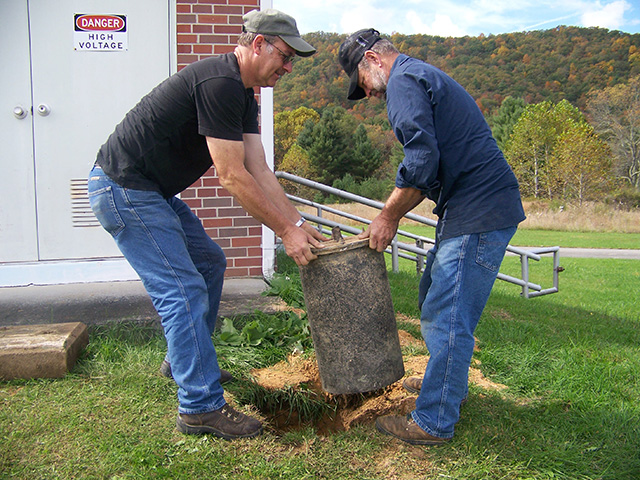
Daryl Shinaberry and Rusty Taylor remove the time capsule from its burial place outside the 300 foot control building. |
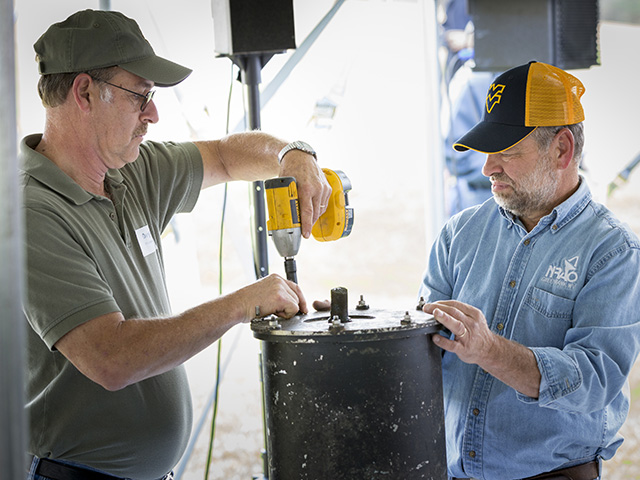
Daryl Shinaberry and Rusty Taylor remove the lid; an audible 'whoosh' was heard when the seal was broken. |
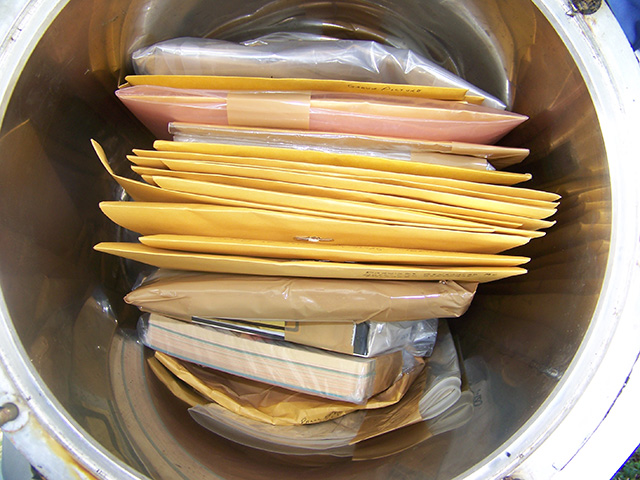
The contents of the time capsule - in pristine condition! |
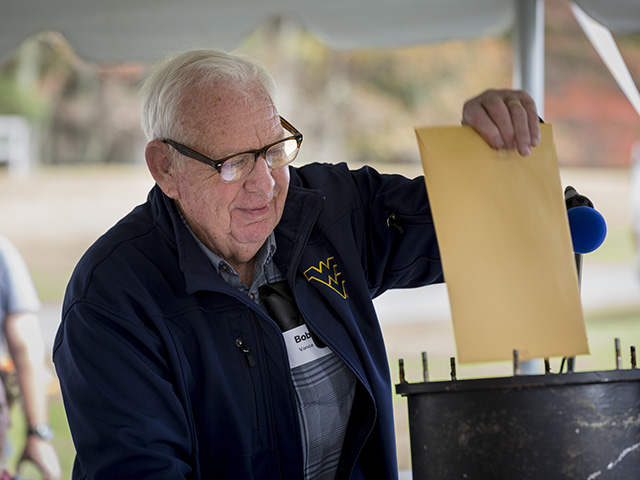
Bob Vance removes an item from the capsule. |
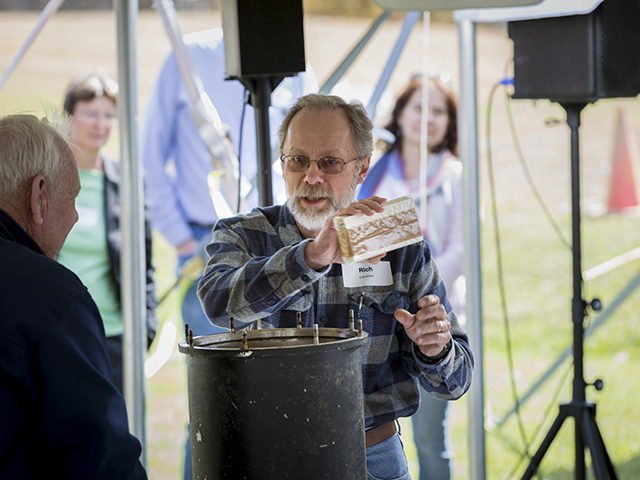
Rich Lacasse shows off the pack of punched cards containing the 300-Foot Telescope control program. |
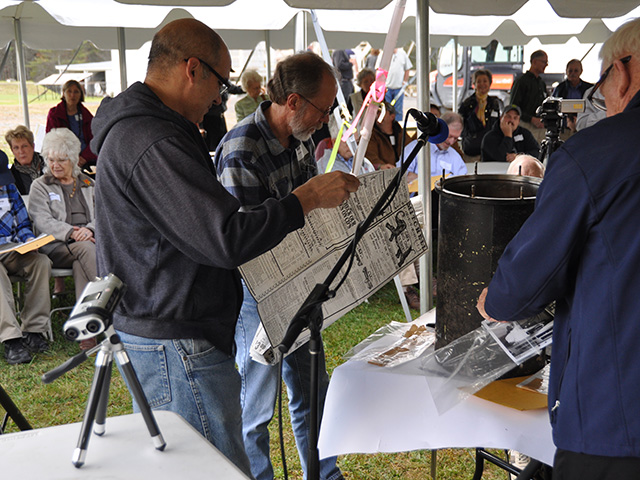
Bob Simon, Rich Lacasse, and Bob Vance (and attendees in the background) examine time capsule treasures. |
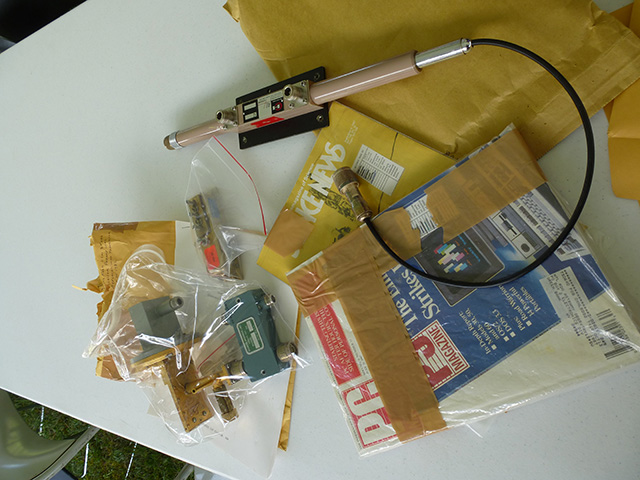
Some items from the time capsule. |
From the Archives is an ongoing series illustrating NRAO and U.S. radio astronomy history via images selected from our collections of individuals' and institutional papers. If readers have images they believe would be of interest to the Archives, please contact Ellen Bouton.

